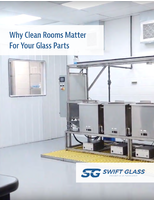ANSI-HSSP Workshops explore issues related to disabled persons.
Press Release Summary:
ANSI Homeland Security Standards Panel (HSSP) is addressing barriers related to emergency preparedness for persons with disabilities through workshop series. As final workshop, Emergency Evacuation Operations workshop will address standards development for emergency planning and contingencies for evacuation needs and concerns of persons with disabilities. Scheduled to take place in New Orleans, LA on June 17, workshop attendance is free but requires registration by June 9, 2010.
Original Press Release:
ANSI-HSSP Workshops Spark Discussions on Accessibility and Product Standards for Persons with Disabilities
As the twentieth anniversary of the Americans with Disabilities Act (ADA) approaches, the accepted definition of disability has shifted from an underlying physical or mental condition to a complex interaction between a person and his or her environment. In turn, barriers in the environment that prevent full social participation are increasingly being identified, addressed, and removed to support independence and promote involvement in all aspects of society for all people.*
The final workshop in the series, Emergency Evacuation Operations, will take place on June 17, 2010, at the Astor Crowne Plaza in New Orleans, LA. The scope of this workshop is standards development for emergency planning and contingencies for the evacuation needs and concerns of persons with disabilities.
Attendance is free of charge, but all attendees must register by June 9, 2010. Click here to register.
The American National Standards Institute (ANSI) Homeland Security Standards Panel (HSSP) is addressing these barriers as they relate to emergency preparedness for persons with disabilities through a series of workshops. On May 24-25, 2010, ANSI-HSSP hosted two workshops to highlight elements of this important topic: Accessibility Codes and Standards and Product Standards for Assistive Products and Devices.
Accessibility Codes and Standards
Technical experts, members of the standards community, code officials, representatives from federal agencies, and disability advocates came together for the May 24 meeting, which detailed existing and needed accessibility codes and standards, including the International Code Council's (ICC) ANSI A117, Accessible and Useable Buildings and Facilities; Title II of the Americans with Disabilities Act; the International Building Code; and more. Workshop chair Dominic Sims, chief operating officer of the ICC, provided opening remarks that emphasized the purpose of the workshop.
"Accessibility impacts people every minute of every day in the built environment," said Mr. Sims. "It is a personal issue for millions of Americans, and our work here today will make buildings both more accessible and more sustainable."
The first panel of the workshop addressed the Federal Role - Development, Interaction and Coordination of Federal Rules and Regulations for Accessibility of Buildings and Structures. Speaker Marsha Mazz of the U.S. Access Board provided an overview of the Access Board, a federal and private partnership that was created nearly 40 years ago to establish minimum guidelines for compliance with the Architectural Barriers Act. Ms. Mazz informed attendees of some of the new guidelines that the Access Board will release in the coming years, including those for outdoor developed areas like trails and playgrounds, and passenger vessels such as cruise ships.
Jay Woodward and Kim Paarlberg of ICC headed the second panel, which highlighted Codes and Standards Role of the SDOs - Development, Interaction and Coordination of ANSI/ICC A117 and ICodes, ADA, ABA, and Fair Housing. In his presentation, Mr. Woodward noted that ANSI's process for approved American National Standards and the government consensus processes are alike in that both are open, allowing anyone to submit changes or express an opinion on a proposal. The biggest difference between ANSI A117, an American National Standard, and the Americans with Disabilities Act or the Fair Housing Act, both federal laws, is enforcement. Federal laws are enforced through civil rights legislation, while A117 is enforced through the building design and construction processes.
Putting the Rules to the Test - Interpretation of Private Sector Guidance and Public Sector Regulation in "Accessible Design" was the focus of the third panel. Mark Mazz, AIA, architectural consultant, said that interpretation of terms in building codes and standards may vary if terms are not defined. He provided the term "public way" as an example, noting that it is unclear and often interpreted differently by code officials.
The workshop ended with a roundtable discussion and question and answer session moderated by Kleo King of the United Spinal Association. Attendees discussed finer points of the ADA, technical issues including how to measure the slope of ramps to assure accessibility, standards for lighting to assist the visually impaired community, and more.
Product Standards for Assistive Products and Devices
On the following day, May 25, ANSI-HSSP co-chairs Christian Dubay of the National Fire Protection Association (NFPA) and Gordon Gillerman of the National Institute of Standards and Technology (NIST) were among the leaders of discussions centering on standards that guide assistive products and devices.
"Disability-related standards have their roots in social services and medicine," said Ms. Mazz during the day's first presentation. "The question that now arises is how we can move off of this charity-driven mode into a more inclusive and forward-thinking way of addressing the needs for individuals with disabilities who are a part of everyday society."
The next panel covered assistive devices and product standards development. Jason Averill of NIST provided an overview of five case studies that illustrate how science has played a key role in developing standards or supporting the development process. He concluded that the development of assistive devices and products standards should begin with a balanced participation that considers the full life cycle of the product, bringing scientists, building owners, standards developers, and disability advocates into the process.
Manufacturers play an important role in standards for assistive devices, as well. Isaac Papier of Honeywell provided a manufacturer's perspective, noting that industry research laboratories take specifications and make them into actual products that speak to customer needs.
"In 2009, ANSI-HSSP held a workshop to examine existing and needed standards for emergency preparedness for persons with disabilities and special needs," explained Karen Hughes, ANSI-HSSP director. "Our May 24 and 25 workshops built upon this successful groundwork to look specifically at the built environment and assistive devices. We look forward to welcoming all affected parties - government officials, the SDO community, consumer advocates, and private sector stakeholders - to our final workshop on evacuation on June 17."
A consolidated report detailing these two events and the upcoming workshop on June 17 will be released in the coming months and will be posted to www.ansi.org/hssp when available.




